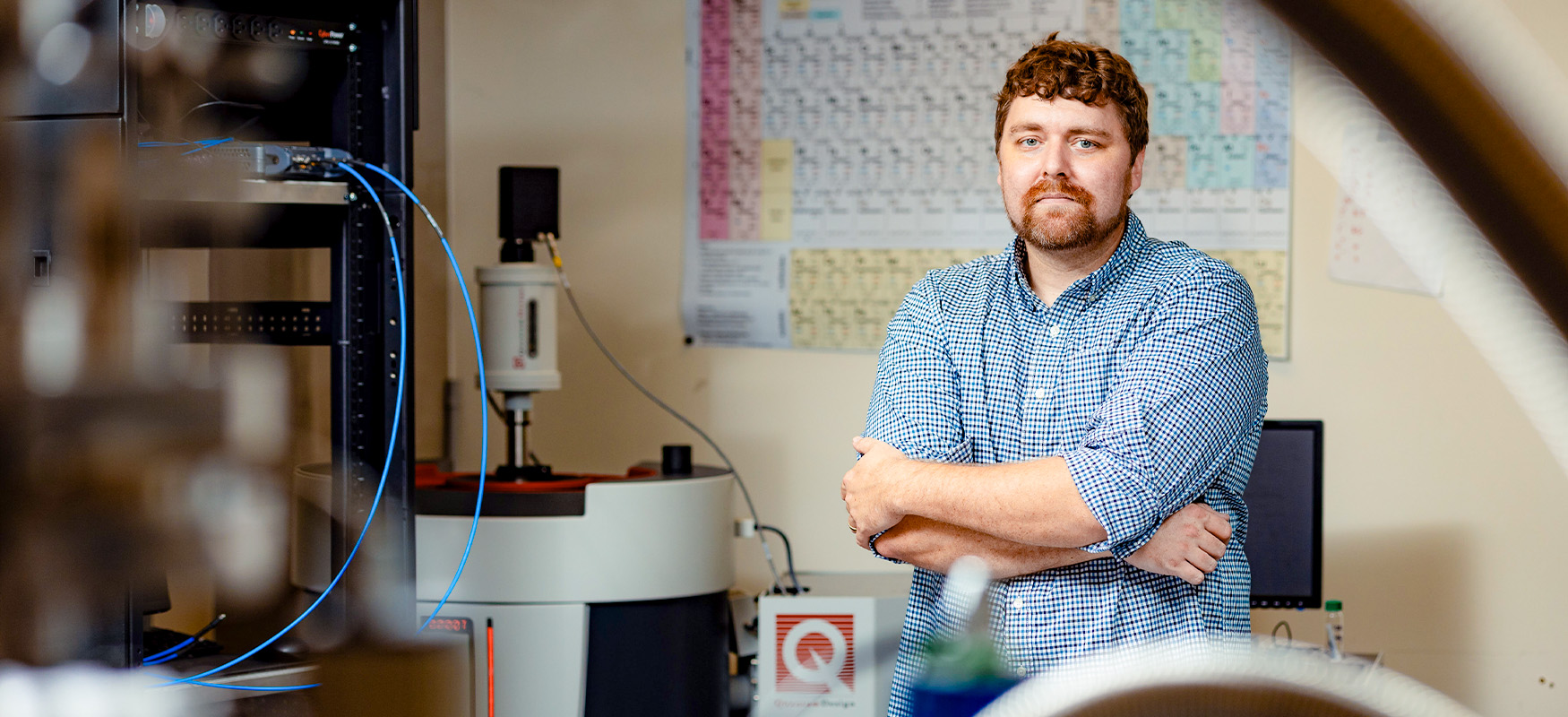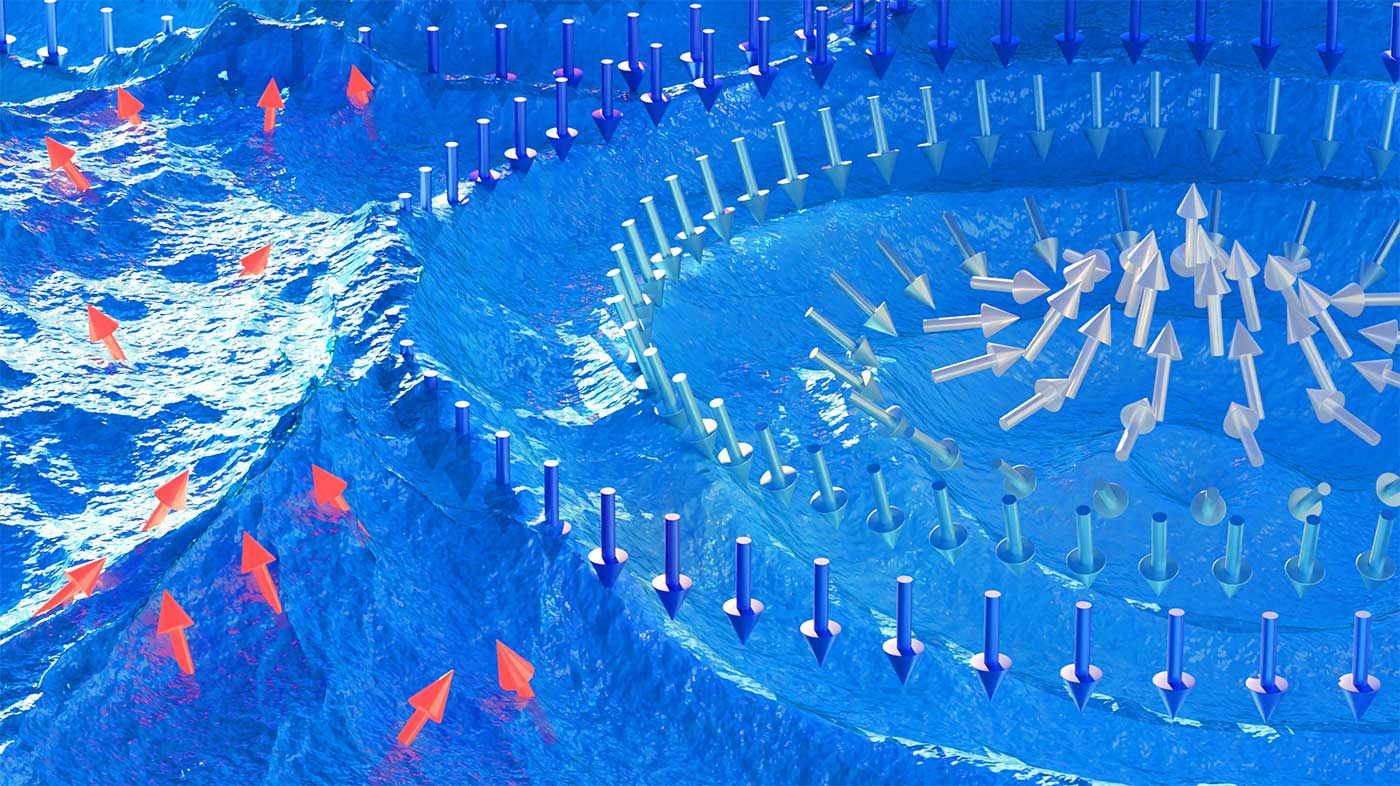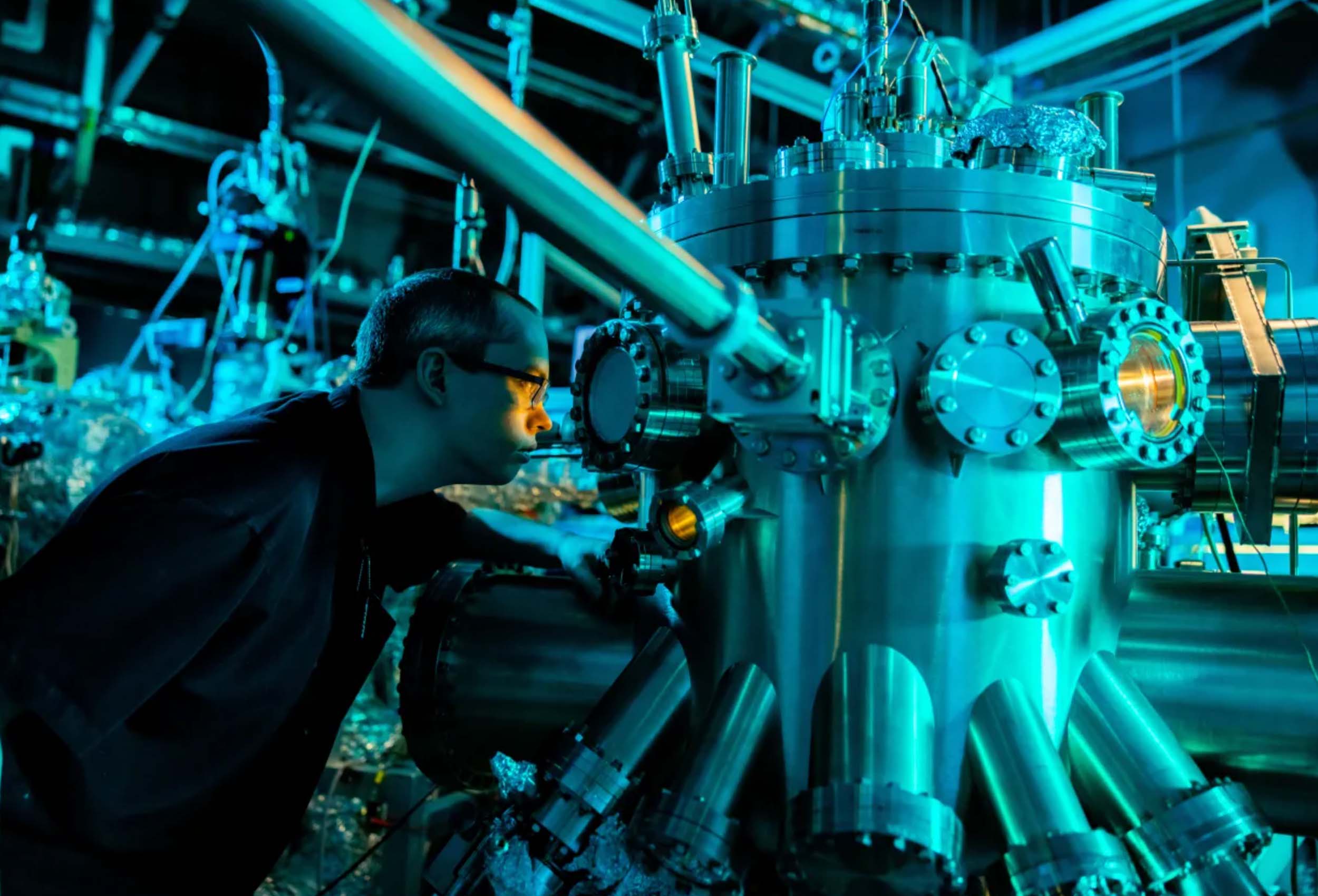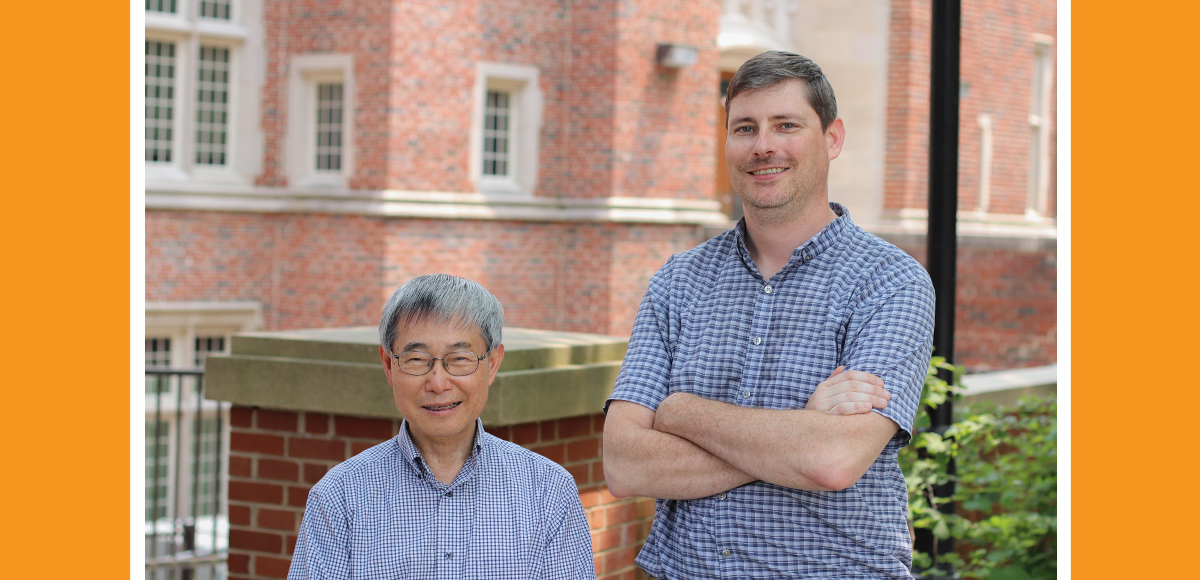MSE Assistant Professor Dustin Gilbert receive the Neutron Scattering Society of America’s Science Price for his work on skyrmions.
Gilbert Honored with NSSA’s Science Prize
Four TCE Faculty Elected AAAS Fellows
Rigoberto Advincula, Takeshi Egami, Sergei Kalinin, and Michela Tafur have been elected fellow of the American Association for Advancement Sciences.
Fox, Scroggins Named Goldwater Scholars
MABE junior Amelya Fox and MSE junior Jakob Scroggins were selected as 2024 Goldwater Scholars, one of the most prestigious scholar awards for undergraduate students in the US.
Five TCE Scientists Ranked as Clarivate Highly Cited Researchers
Five researchers from the Tickle College of Engineering appeared on Clarivate’s 2023 High Cited Researchers list.
TIBML’s Hattar Oversees Microscopy Advance Through International Connections
Associate Professor Khalid Hattar, director of the Tennessee Ion Beam Laboratory, coordinated work with international teams to install a first-ever advanced lens for an electron microspore at Sandia National Laboratories.
Kalinin Collaboration Moves Microscopy into the Automated Fast Lane
Sergei Kalinin and collaborators at UT and ORNL earned an R&D100 Award for developing autonomous processes for microscopy that can impact research methods in multiple disciplines.
Gilbert Team Discovery Puts a Magnetic Spin on Neuromorphic Computing
The word “fractals” might inspire images of psychedelic colors spiraling into infinity in a computer animation. An invisible, but powerful and useful, version of this phenomenon exists in the realm of dynamic magnetic fractal networks. Dustin Gilbert, assistant professor in the Department of Materials Science and Engineering, and colleagues have published new findings in the […]
UT awarded National Science Foundation Materials Research Science and Engineering Center
The new center’s focus will lead to new industries in clean energy, computing, and national security.
Lass and Liaw Put Their Spin on Turbines with DEPSCoR Grant
A duo of Tickle College of Engineering researchers is among 28 collaborative academic teams chosen by the Department of Defense to share $18 million in Defense Established Program to Stimulate Competitive Research (DEPSCoR) awards for 2023. These awards are designed to strengthen basic research infrastructure at institutions of higher education in under-utilized states or territories. […]
Kalinin Delivers Remarks at Prestigious Conference
UT MSE Professor Sergei Kalinin recently delivered remarks at the prestigious Manuel Cardona Seminar Series in Barcelona.




